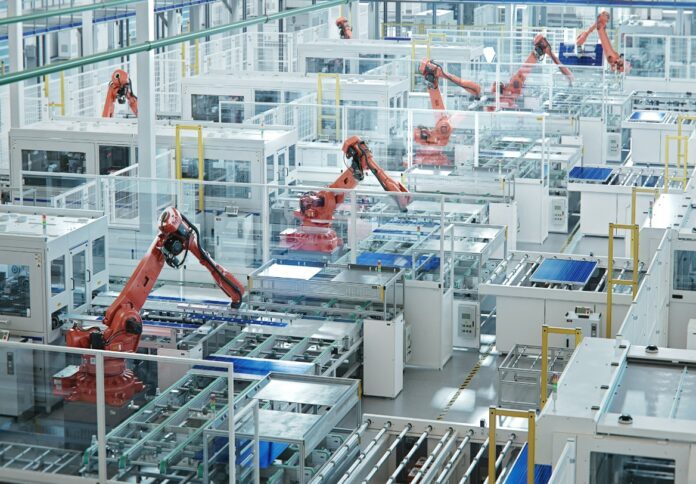
Article by Andrew Mamonitis, Vice President, Manufacturing at ECI Solutions
Australians are familiar with natural disasters like heatwaves, bushfires, droughts, floods, severe storms, and tropical cyclones. According to the Climate Council, 84 per cent of Australians have been directly affected by at least one climate-fuelled disaster since 2019(1).
These natural disasters threaten lives, destroy property, and cause costly infrastructure damage that impacts society and the economy. They also impact business operations directly. Manufacturers in particular face unique challenges threatening continuous operations. For example, floods and wildfires can disrupt supply chains, damage critical infrastructure, and compromise data integrity, and it all comes at a hefty price tag.
In 2017, a Deloitte Access Economics report commissioned by the Australian Business Roundtable for Disaster Resilience and Safer Communities estimated that natural disasters would cost more than $39 billion annually by 2050(2). In 2021, this was revised to $73 billion annually by 2060 under the lowest emissions scenario(3). That’s $1.2 trillion in cumulative costs over the next 40 years(4).
Natural disasters can financially devastate a country. Two thirds of the costs will be in Queensland and New South Wales due to increased exposure to tropical cyclones and floods(5). Costs in Melbourne and Brisbane will also rise significantly, as major rivers and growing populations will lead to greater flooding costs for Melbourne and tropical cyclones and floods for Brisbane(6).
Manufacturers must evolve their resilience approach by employing advanced technologies like cloud-based systems that safeguard against traditional on-premises vulnerabilities.
Identifying vulnerabilities
Manufacturers face big risks with on-premises servers during natural disasters. High winds and floods can damage these servers, cutting access to crucial data and stopping key applications. Power outages make things worse, keeping data out of reach and halting operations. After a disaster, downtime can drag on as damaged servers delay data recovery and repairs add financial stress. Employees struggle to stay productive without remote data and app access, slowing recovery even more.
The shift to the cloud for increased resilience
Cloud-based solutions offer a safety net for manufacturers to mitigate natural disaster risks. Manufacturers can maintain connectivity and data security, even when physical infrastructure is compromised, by adopting cloud systems. A cloud-based enterprise resource planning (ERP) system provides a secure, resilient alternative to on-premises servers, centralising data and systems remotely. Unlike on-premises systems, which are susceptible to disasters, cloud-based ERPs protect valuable data from physical damage, preventing data loss and reducing downtime for manufacturers.
Shifting to cloud-based systems can improve disaster recovery times significantly. Employees can work remotely using any internet-connected device with critical data stored securely in the cloud, even if the manufacturing plant is damaged or inaccessible. Cloud solutions facilitate business continuity, turning a devastating setback into a manageable situation. Manufacturers that embrace the cloud are better positioned to weather natural disasters, minimising downtime and preserving operational integrity.
Best-practice solutions
Following best practices can help to ensure a seamless transition for manufacturing sector cloud migration. Data migration, while essential, can be complex, requiring information from various systems, formats, and storage types to be consolidated. The key to success is a comprehensive roadmap for a secure, resilient data setup. Manufacturers should select an ERP vendor with a proven data migration track record, considering compatibility with existing IT infrastructure, scalability, and support services.
After selecting an ERP vendor, manufacturers need to identify relevant data sources, including on-site servers, external drives, or previous cloud-based software. They can migrate the most critical information accurately and efficiently by focusing on essential master, historical, and transactional data. Once data sources are identified, the next step is data mapping, aligning the information to the ERP’s database structure to ensure compatibility and minimise import issues.
Data transformation and loading follow, with vendors providing support for a smooth migration. Validating and testing the system are critical to confirm that data is complete, accurate, and integrated.
Adopting a cloud-based ERP system is a strategic decision that offers protection against natural disasters, shielding manufacturers from infrastructure damage, data loss, and operational disruptions. As natural disasters become more frequent and severe, this transition to cloud solutions is essential for manufacturers striving for resilience and continuous operation. Investing in a cloud-based ERP system can be a critical competitive advantage for manufacturers, driving business continuity and resilience in challenging circumstances.
References:
(1) https://www.climatecouncil.
(2) https://
(3) https://
(4) https://
(5) https://
(6) https://



















